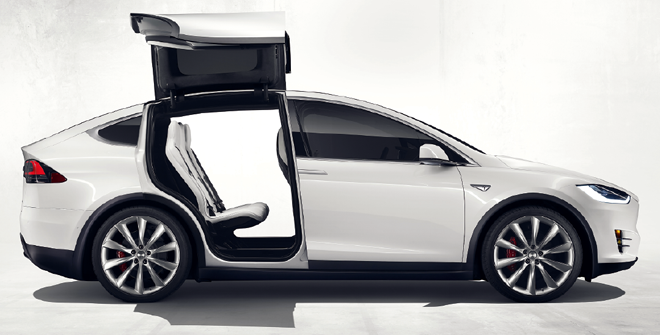Was it or wasn’t it? That’s the question that will now be asked every time someone crashes a Tesla. Well, don’t bother claiming that “Autopilot made me do it” if it isn’t true, because Little Brother is watching, in the form of electronic logs that record every movement of every Tesla automobile.
After a recent Model X rollover accident in Pennsylvania, the driver (who has reportedly been cited by police for careless driving) claimed that Autopilot was active during the crash. At first Tesla was unable to verify remotely whether it had been or not.
“We received an automated alert from this vehicle on July 1 indicating air bag deployment, but logs containing detailed information on the state of the vehicle controls at the time of the collision were never received,” Tesla said in a statement. “This is consistent with damage of the severity reported in the press, which can cause the antenna to fail.”
Apparently Tesla has now been able to download the logs directly from the vehicle, and says that Autopilot was turned off during the crash.
“Onboard vehicle logs show Autopilot was turned off in Pennsylvania crash. Moreover, crash would not have occurred if it was on,” tweeted Elon Musk.
A Tesla spokesperson released a play-by-play description of the incident:
We got access to the logs. Data from the vehicle shows that Autosteer was not engaged at the time of this collision. Prior to the collision, Autosteer was in use periodically throughout the approximately 50-minute trip. The most recent such use ended when, approximately 40 seconds prior to the collision, the vehicle did not detect the driver’s hands on the wheel and began a rapidly escalating set of visual and audible alerts to ensure the driver took proper control. When the driver failed to respond to 15 seconds of visual warnings and audible tones, Autosteer began a graceful abort procedure in which the music is muted, the vehicle begins to slow and the driver is instructed both visually and audibly to place their hands on the wheel. Approximately 11 seconds prior to the collision, the driver responded and regained control by holding the steering wheel, applying leftward torque to turn it, and pressing the accelerator pedal to 42%. Over 10 seconds and approximately 300m later and while under manual steering control, the driver drifted out of the lane, collided with a barrier, overcorrected, crossed both lanes of the highway, struck a median barrier, and rolled the vehicle.
Sources: @elonmusk, Electrek, Detroit Free Press, Jalopnik



















































































